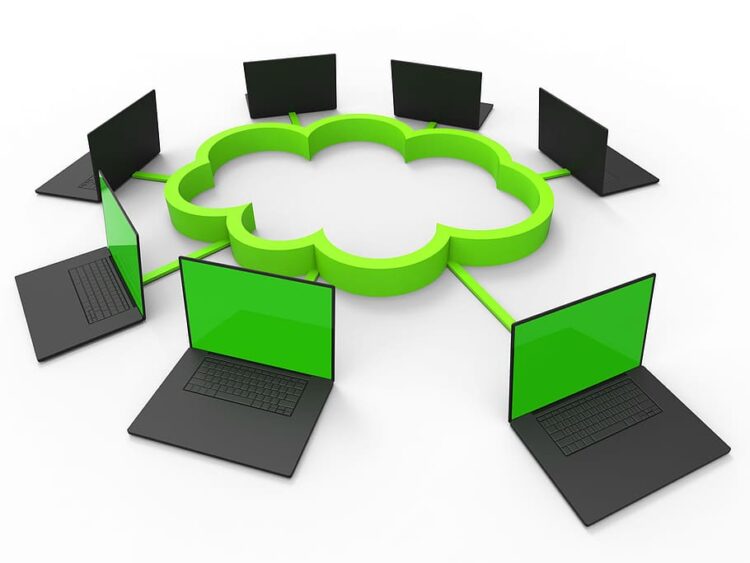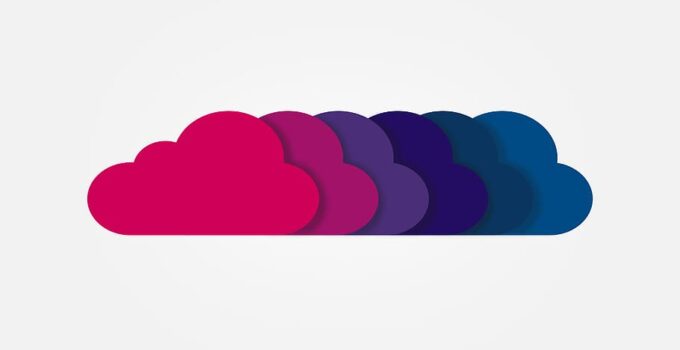Cloud computing is a solution in widespread use among global businesses and various industries, and its pace of development is increasing year by year. What is trending now and what is the forecast for the future in this sector?
Cloud computing is a technology designed for processing and storing data. Its uniqueness consists in the fact that data is not stored on computer drives, but in a virtual environment, on servers outside the local network, in the so-called cloud. From public clouds and private clouds to mixture clouds, cloud computing supports efficiency and coordinated effort, yet additionally offers improved accessibility and security answers for information. According Verticomm by providing virtual storage, it helps to make the workflow more coordinated and easy.

source:aithority.com
Page Contents
Why the continued popularity of cloud solutions?
This technology makes it easier to run a company and guarantees safer data storage, efficient information transfer, easier costumer service, as well as additional savings for the business. And, notably, it is a key solution for e-commerce businesses.
Cloud computing facilitates many processes in the day-to-day functioning of businesses, yet this varies on a case-by-case basis, depending on the form of application. This technology often allows to get a business off the ground faster and on a grand scale. At the same time, programmers need to find out how each of the cloud providers works, so as to adjust their code, and sometimes entire systems, to work properly in a particular solution.
Most importantly, processing data in the cloud has a marked impact on the work of a company, website, or even individual employees. The cloud means it is no longer necessary to plan purchasing servers before peaks in consumer activity, such as holidays, to cope with a sudden change in traffic on websites involved in e-commerce. All it takes is to automatically or manually scale server capacity a few days before the anticipated increase in web traffic.
It is also worth noting that start-ups can start using such services quickly and cheaply. Their programmers do not have to deal with differences in equipment and operating systems or their various versions.
Year-by-year growth

source:pxfuel.com
The cloud computing market is growing year-by-year. Owning and launching your own hardware is becoming increasingly expensive due to the complexity of DevOps. Currently, experienced teams of web engineers are needed to maintain the equipment, to configure it on the best cluster tools, service the clusters, set up failovers and ensure easy access.
Hence, the service costs are higher than the price of the equipment, especially if we imagine implementation in many locations. And this is exactly what the market demands, enforcing the launch of its services in many regions in order to be closer to customers. It is no wonder then that it is becoming increasingly cheaper and more cost-effective to opt for the offer of cloud computing providers, who ensure full service and maintenance.
What is more, these services involve paying only for the functions which you actually use. There is no need to maintain dozens or hundreds of operating servers and pay for them to avoid difficulties resulting from a potential future spike in web traffic. The cloud enables to scale the business depending on the demands. This means lower costs, as fewer resources are required. The initial cost is also lower, since, without the cloud, you first have to buy server equipment, which costs up to hundreds of dollars, although it will become obsolete in 4 or 5 years.
Cloud computing is getting cheaper and cheaper every year, thanks to favourable economic conditions. More people use it, there is stronger competition among providers, and increasingly more developed software makes it easier to launch your own cloud.
Trends as of today

source:pxfuel.com
In the past year several strong trends were noticeable in the cloud computing industry.
The Kubernetes platform predominates over its rivals in the cloud computing industry, although even the smallest providers (e.g. appfleet.com) offer similar k8s solutions. It is a platform for managing and scaling containers. By means of k8s you can create a solution which will control the number of instances of your application, and will also add a load balancer, and all of that based on containers. Moreover, k8s is supported by most public clouds.
This goes to show the importance of containers, but it also demonstrates how difficult it is to maintain such infrastructure. Containers are a new way of deploying online services. Picture a zip file containing everything you need to launch software. Regardless of its location, it will always have the same content. The same applies to containers.
They are light virtual operating systems which contain the whole programming code, all the configurations and additional services. This makes them mobile and easy to scale. You do not even need to know where a container is working. These days, programmers can write their code in any give language and if it works in our system, it will work anywhere. This automates work and allows the company to develop faster.
Equally crucial for the industry is the launch of the new technologies Narrowband IoT (NB-IoT) and LTE Cat M1. The former solution is a Low Power Wide Area Network (LPWAN) technology standard, developed to allow the operation of a wide range of mobile services, especially connected to device-to-device communication.
The latter is a data transfer network for mobile phone service providers which ensures faster transfer (up to 1 Mb/s) and supports Voice Over LTE (VoLTE) applications. It can also have mobile and portable applications (e.g. telematics, fleet management).
The launch of these technologies and the deployment of 5G will allow to control technological processes from “the cloud”. The growth of the interface and unification market is also becoming relevant. This would enable quick switching from cloud to cloud even in case of provider shutdowns.
What next?

source:pxfuel.com
The year 2024 will belong to the 5G network, which will have an even greater contribution to the Internet of Things. Increasingly more intelligent devices in our homes and in urban environments will make our lives even easier.
This also means that cloud service providers have to open more so-called edge locations, to be closer to users, cut delays, and boost the efficiency and power of the new solutions. Edge locations are smaller data centers located closer to users. Instead of using one big, partly overloaded data center, you can set up 20 smaller servers, lowering the costs and increasing capacity, as users will start connecting to nearby servers.
Cloud computing seems to have a bright future ahead. Currently the technology is developing much faster and is cheaper than ever before. More and more industries switch to cloud computing, as it turns out to be much easier to operate than own data centers. Maintaining servers is simply becoming obsolete. It is being replaced by maintaining a code, which works together with systems that monitor server load. This is the demand of our times, and that is a fact we cannot argue with.
This article was written in collaboration with with Dmitriy Akulov, entrepreneur, founder of IT startups & companies Prospect One, jsDelivr, appfleet





